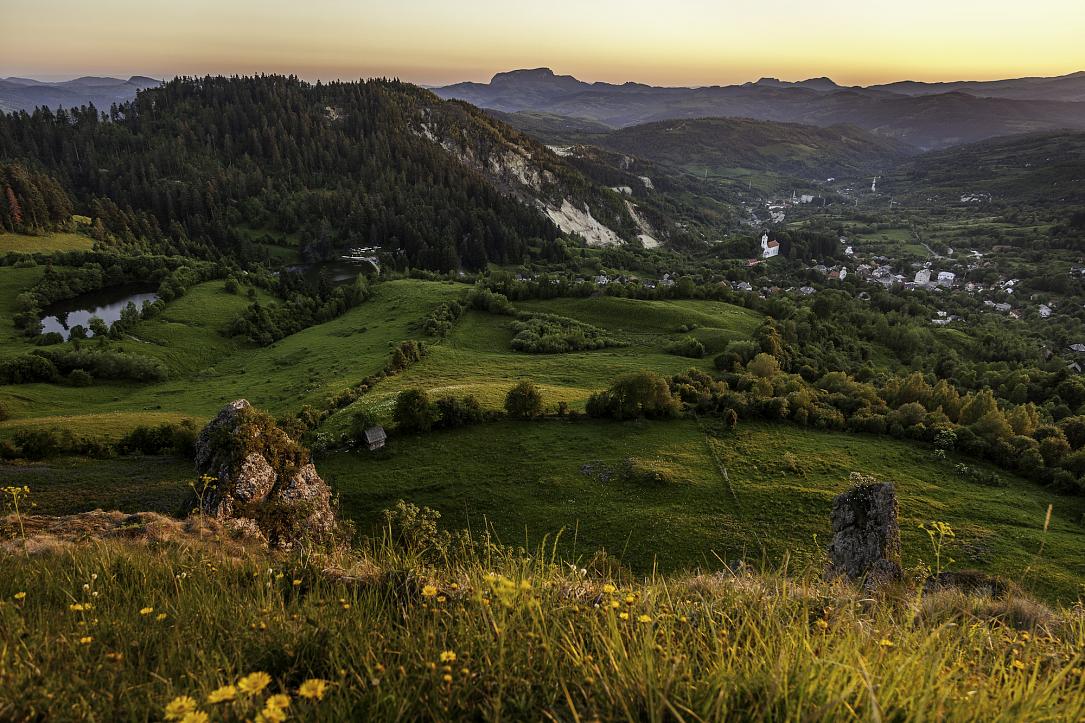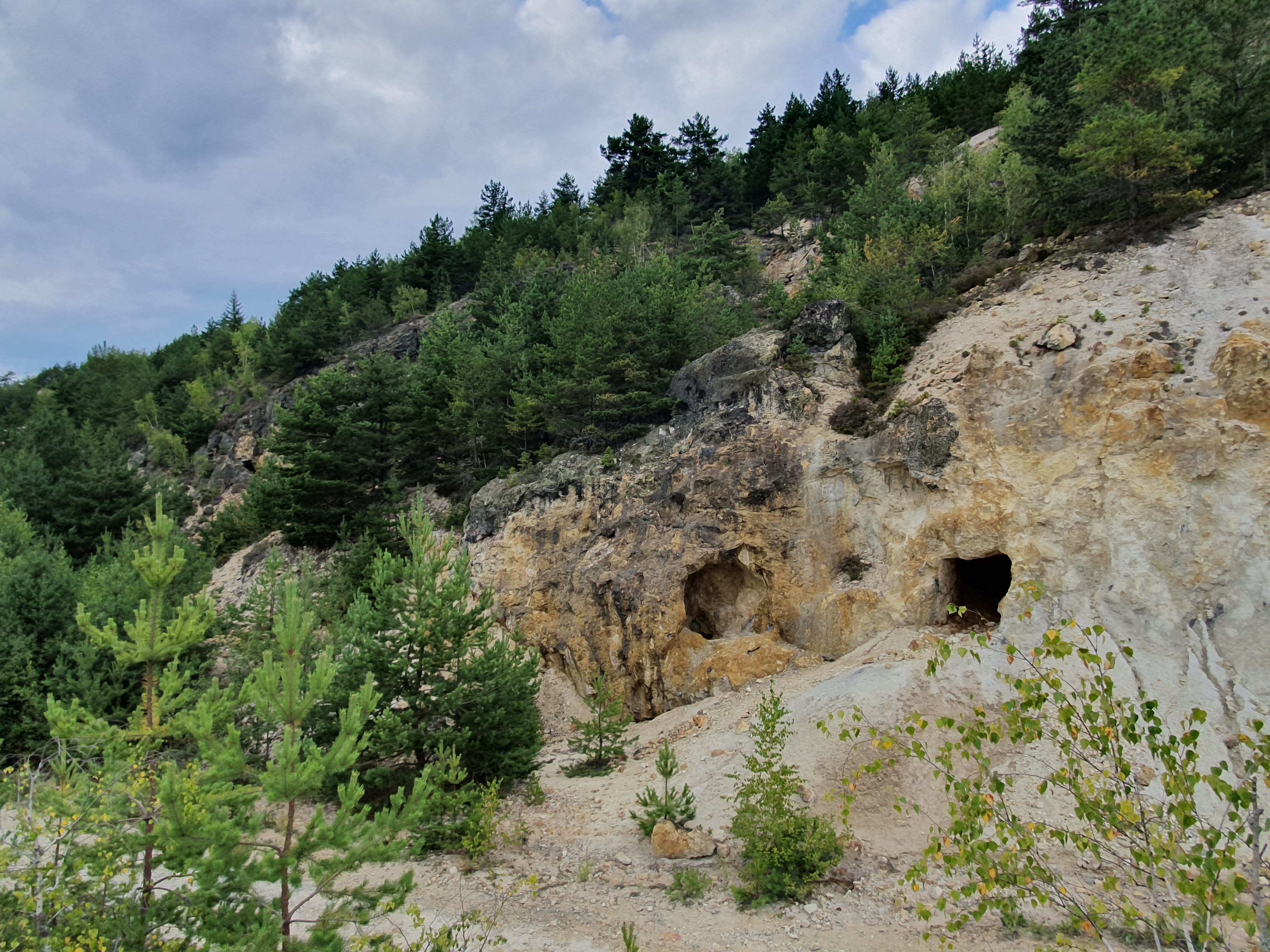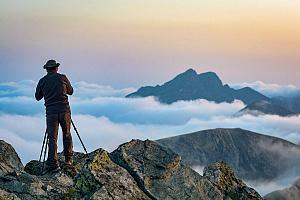What makes Romania's Roșia Montană a UNESCO world heritage site?

The mining landscape in Roșia Montană, a Roman-era mining site in Alba county, saw a double UNESCO inclusion this week. It was recognized as a world heritage site but also as an endangered one, highlighting both its value but also the need for measures to protect it.
At the time of its UNESCO heritage list inscription, Roșia Montană has "the most significant, extensive and technically diverse underground Roman gold mining complex known," according to the official announcement.
The site, known as Alburnus Maior when it was part of the Roman Empire, is located in central Romania, in the historical region of Transylvania, in the Metalliferous range of the Apuseni Mountains. Starting in 106 CE, for over 166 years, gold was extracted from the site. The Romans developed highly engineered works, different types of galleries totaling seven kilometers, and a number of waterwheels in four underground spots chosen for their high-grade ore, UNESCO explained.
The site shows a unique mix of Roman mining technology and locally developed technique. It is also a source of information about Roman mining activities, as wax‐coated wooden writing tablets found there offer detailed legal, social, and economic information about mining in Alburnus Maior and the wider Dacia province.
In time, the site, which is some 75 km away from Alba-Iulia, attracted settlers from various parts of Europe, creating a culturally-diverse community of five religious denominations and several ethnic groups. The bid to include Roșia Montană on UNESCO's world heritage list also notes the diversity of architectural styles on site, "eclectic influences fused with local tradition, a cosmopolitan settlement whose roots and embellishments are based on freeholders' exploitation."
In order for a site to be added to the World Heritage List, it needs to meet one of the six cultural criteria established through the World Heritage Convention. Roșia Montană was recognized based on three criteria, the National Heritage Institute explained.
Since it is a top example of an underground Roman gold mine and demonstrates subsequent exploitation and continuous settlement, it meets the criterion of exhibiting "an important interchange of human values, over a span of time or within a cultural area of the world." As the mining activity continued after the antiquity period, the site remained active, particularly during the 18th and 19th centuries, when German, Austrian and Hungarian miners were brought in and used advanced technology to exploit the deposits on a large scale.
As it exemplifies the cultural tradition of one of the oldest documented mining communities in Europe, and an activity that survived until the beginning of the twenty-first century (state-run mining ended in 2006), it also meets the criterion of bearing "a unique or at least exceptional testimony to a cultural tradition or to a civilization."

Another criterion asks a site "to be an outstanding example of a type of building, architectural or technological ensemble or landscape which illustrates (a) significant stage(s) in human history." The archeological works carried out at Roșia Montană revealed important aspects for the global history of mining, the bid explains. It is the case of the carved trapezoidal-section galleries, shafts and inclined communication galleries with stairways cut into the bedrock, or of the treadmill-powered water-dipper wheels, which were mostly destroyed elsewhere in the former Roman world by modern mining.
The double inclusion
The mining landscape was simultaneously added to the world heritage list but also to the list of endangered heritage "pending the removal of threats to its integrity posed by possible extractive activities." The inclusion on both lists highlights the complex status of the site, which needs both measures to protect it, and eventually see it off the endangered sites list, and a program to make use of its heritage features.
In 1999, the Canadian company mining company Gabriel Resources won a license to exploit the mining site at Roșia Montană. The Romanian state blocked the gold mining project following massive street protests on concerns that the use of poisonous substances in the mining project would cause severe environmental damage. The company took the case at the International Centre for Settlement of Investment Disputes (ICSID) in Washington and asked for damages of USD 4.4 billion for the blocking of the project.
Reacting to the news of the UNESCO heritage list inclusion, the Canadian company said "such application [for UNESCO protection] and the inscription [in the list of protected areas] are fundamentally incompatible with the rights the Gabriel group acquired to develop the project and the continued existence of an exploitation mining license for the project area."
The mayor of Roșia Montană argued the inclusion doesn't bring any benefits to the area, saying it would bring the community additional requirements to fulfil concerning the refurbishment of buildings.
"Let's not forget it blocks on the medium and long term the largest gold resources in Europe, which is found in Roșia Montană," mayor Eugen Furdui told television station Digi24. The inclusion is not favorable to the community because the refurbishment of any building on the premises of an UNESCO site "requires special permits and bureaucracy."
Many other reactions welcoming the UNESCO inclusion mentioned the need for sustainable development in the area. President Klaus Iohannis welcomed the decision and argued that Roșia Montană should become "a model of heritage use through the area's sustainable development."
In his turn, prime minister Florin Cîţu explained on July 28 that no decision was taken on the plan for Roșia Montană after the UNESCO inclusion and that talks would follow with local authorities and the community. He also said he was waiting on an estimate from the Culture Ministry regarding the costs of preserving the heritage in the area.
A message concerning the community's partner status in developing a program for the area came from the National Heritage Institute. The institution said the site's inclusion would serve the local community, which will be a "state partner in the program of measures that needs to be defined and implemented for the preservation and highlighting of the heritage and the area's sustainable development."
Europa Nostra, a pan-European federation working for the preservation of cultural heritage that placed the site on the 2013 list of the seven most endangered heritage ones in Europe, also applauded the inclusion decision. "This is a true milestone in the wide mobilization of heritage stakeholders to ensure a sustainable future for this exceptional cultural landscape. We can only applaud the Romanian authorities for their determination to stand by their cultural and natural heritage, to stand by the local community of Roșia Montană, and to stand by the engaging and convincing voices of civil society that have not spared their efforts to campaign to save Roșia Montană," it said.

Romanian sites on UNESCO's World Heritage list
Roșia Montană joins several other cultural and nature sites in Romania that are part of UNESCO's world heritage list. These cultural are: the eight churches with external mural paintings of northern Moldavia, built from the late 15th century to the late 16th century; the Dacian fortresses of the Orăștie Mountains, built in the 1st centuries B.C. and A.D. under Dacian rule; the historic center of Sighişoara, an example of a small, fortified medieval town with an important strategic and commercial role on the fringes of central Europe for several centuries; the Monastery of Horezu, a masterpiece of the Brâncovenesc style, also known as the Wallachian Renaissance; the seven villages with fortified churches in Transylvania, characterized by a specific land-use system, settlement pattern and organization of the family farmstead that have been preserved since the late Middle Ages. The nature sites are the Danube Delta and the ancient and primeval beech forests of the Carpathians and other regions of Europe.
(Opening photo by Radu Salcudean/ courtesy of Institutul National al Patrimoniului)
simona@romania-insider.com













